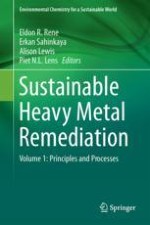2017 | OriginalPaper | Buchkapitel
7. Bioprecipitation of Metals and Metalloids
verfasst von : Erkan Sahinkaya, Deniz Uçar, Anna H. Kaksonen
Erschienen in: Sustainable Heavy Metal Remediation
Aktivieren Sie unsere intelligente Suche, um passende Fachinhalte oder Patente zu finden.
Wählen Sie Textabschnitte aus um mit Künstlicher Intelligenz passenden Patente zu finden. powered by
Markieren Sie Textabschnitte, um KI-gestützt weitere passende Inhalte zu finden. powered by
